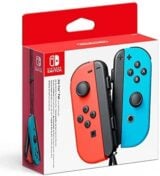Review: Nintendo’s Daemon X Machina is an uneven shooter
Nintendo’s latest is imperfectly constructed but gets the basics right
- Game Director
- Ken Karube
- Key Credits
- Kenichiro Tsukuda (Producer), Ken Awata (Co-Director)

Daemon X Machina finds beauty in destruction.
It’s there in the landscape, a devastated expanse of broken skyscrapers and gigantic combat machinery, painted in vibrant oranges and blues. It’s there in the background story, where your fellow mercenaries, hired by powerful consortiums to protect the planet’s dwindling resources, muse on the aesthetic pleasures of battle or the wonders of death and rebirth.
Most importantly, it’s there in the combat, as you board your mech, or ‘Arsenal’, and launch it into a frenetic dance of bullets and lasers. There’s not much sense of weight or scale here – you don’t tower above the world or feel like you’re heaving around tons of metal.
But as you send your bipedal vehicle skating between buildings then blast into the sky towards a distant opponent, you wouldn’t want it any other way. This is a mech game about movement, and as you spiral, plummet and charge around your prey, strafing past incoming fire while lining up your next shot, it becomes a performance.
The rest of the time, in the confines of your hangar, you work to maximise your machine’s handsome lethality. As with any good mech, Arsenals are highly customisable, so you switch out body parts and bolt on weapons that you’ve salvaged from the battlefield or ordered from the factory. Different limbs, heads and torsos affect speed, defence, fire rate and various other attributes.
Weapons range from handheld machine guns, sniper rifles and swords to shoulder-mounted cannons and missile launchers. Add an auxiliary mine thrower or supply unit and fix a couple of switchable alternative hand weapons to your back, and your Arsenal bristles gloriously with oversized ordnance.
Some fiddly menu systems aside, the simplicity in this part of the game is refreshing, but it puts extra pressure on the other elements – the narrative and missions – to deliver. The story, unfortunately, is a disaster. There are too many characters, many of them instantly irritating, dull or downright embarrassing, with voiceovers to match.
“There’s not much sense of weight or scale here… but as you send your bipedal vehicle skating between buildings then blast into the sky towards a distant opponent, you wouldn’t want it any other way.”
Dialogue is often confusing; no matter how simple or complex the motivations of each individual are, they never seem to make sense. By the time the plot amounts to anything, it’s hard to follow or care about its destination.
Still, it’s not overly obtrusive, and mostly you can focus on shooting things. There’s a decent range of mission objectives, which sometimes change on the fly, and many different environments with distinctive arrangements of space and cover.
The game puts up a good challenge at times too, especially against its handful of huge bosses or teams of other piloted Arsenals (which can also be taken on in a separate list of local or online co-op missions). And what you equip matters, redefining the tactical approaches at your disposal and influencing your chances of success.
But there are a lot of missions, and many are overly similar. Regular enemies such as drones and tanks are inconsequential, and to compensate the game relies too heavily on the other mercenaries to provide competent opposition. Despite their different weapons and tactics, these battles soon fail to distinguish themselves, and the pace becomes monotonous.
Some missions are also clumsy in design, with unclear success or fail parameters (again not helped by the poor writing), or frustrating sudden deaths occurring from falling into water or getting knocked out of the mission area. And in later missions, the biggest danger is often running out of ammo, with no recourse but a dejected restart.
In full flow, Daemon X Machina can be exceptional. The thrill of boosting along strapped with high-powered cannons, trying to pin down an equally mobile and well-armed opponent, can’t be denied. But it’s a thrill that fades with repetition, in a structure that falls uncomfortably between a Platinum style linear action game and the long haul loop of a Monster Hunter. As such, it struggles to keep those battles engaging long enough to work through its upgrade paths and overblown narrative – cumbersome frames that taint the explosive beauty.
An original take on the mech shooter that puts agility and style at the forefront and produces a number of exhilarating battles. But some uneven and uninspired mission design creates too much filler in between.
- Excellent sense of movement and control
- Varied locations and mission objectives
- Great range of tactical customisation options
- Too many bland and repetitive missions
- Abysmal story and script






















